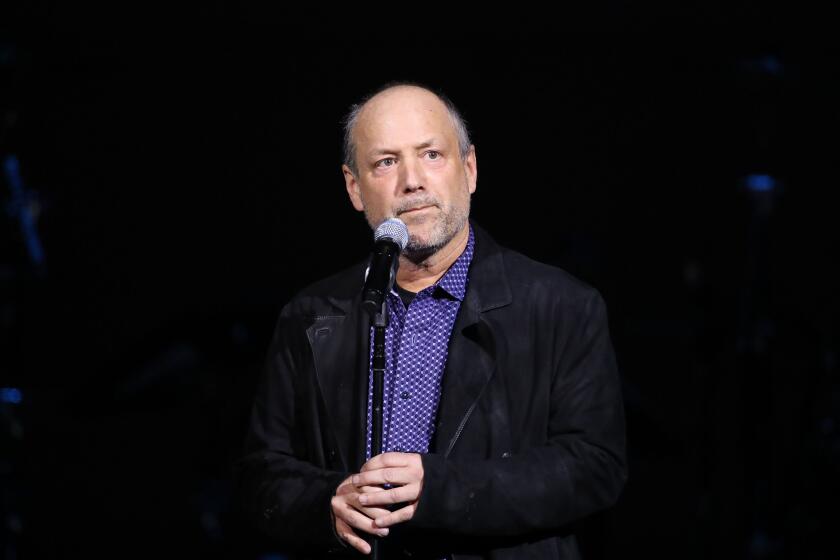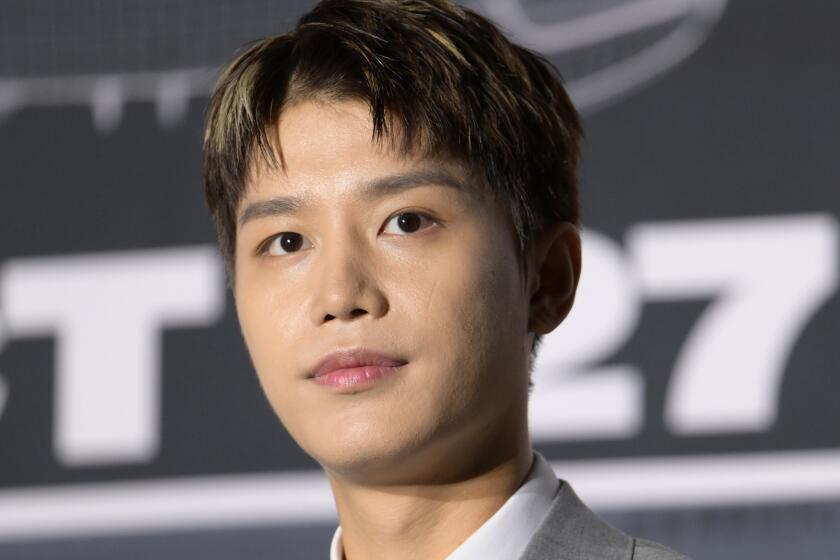THE NATION : GANGSTA RAP : The Art of Representin’ the Afflicted’s Story
- Share via
DURHAM, N.C. — The blistering attacks on gangsta rap reveal the fury this music can evoke. Many elements of gangsta rap are certainly disturbing. Equally dismaying has been the scapegoating of its artists. How can we avoid the pitfall of unfairly attacking black youth for problems that bedeviled our culture long before they came on the scene?
If the 15-year evolution of hip-hop teaches us anything, it is that history is made in unexpected ways by unexpected people with unexpected results. Rap is now safe from the perils of quick extinction that was predicted at its humble start. But its birth in the bitter belly of the ‘70s proved to be a Rosetta Stone of black popular culture. Afros, “blunts,” funk music and carnal eruptions define a “back-in-the-day” hip-hop aesthetic.
The ‘70s busted the economic boom of the ‘60s. The fallout was felt in restructured automobile industries and collapsed steel mills, in the depletion of social services and in the gutting of public spaces for black recreation. Hip-hop was born in these bleak conditions. Hip-hoppers joined pleasure with rage and turned the details of their lives into craft and capital. This is the world hip-hop would come to “represent”: privileged persons speaking for less visible or vocal peers. The art of “representin”’ that is much ballyhooed in hip-hop is the witness of those left to tell the afflicted’s story.
As rap expands its vision and influence, its unfavorable origins and its relentless quest to represent black youth are both a consolation and challenge to hip-hoppers. They remind rappers that history is not merely the stuff of imperial dreams from above. Representing history is within reach of those who seize the opportunity to speak for themselves, to represent their own interests at all costs. Even rap’s largest controversies are about representation. Hip-hop’s attitudes toward women and gays continually jolt in the unvarnished malevolence they reveal. The sharp responses to rap’s misogyny and homophobia signify its central role in battles over the cultural representation of other beleaguered groups. This is particularly true of gangsta rap.
While gangsta rap takes the heat for a range of social maladies, the roots of racial misery remain buried beneath moralizing discourse that is confused and sometimes dishonest. There’s no doubt that gangsta rap is often sexist. It is doubly wounding for black women: How painful it is for them, many of whom have fought valiantly for black pride, to hear the dissonant chord of disdain carried in the angry epithet “bitch.”
The link between the vulgar rhetorical traditions expressed in gangsta rap and the economic exploitation that dominates the marketplace is real. The circulation of brutal images of black men as sexual outlaws and black females as “ ‘ho’s” in many gangsta rap narratives mirrors ancient stereotypes of black sexual identity. Male and female bodies are turned into commodities. Black sexual desire is stripped of redemptive uses in relationships of affection or love.
Gangsta rappers, however, don’t merely respond to the values and visions of the marketplace; they help shape them as well. The ethic of consumption that pervades American culture certainly supports the rapacious materialism shot through the narratives of gangsta rap. Such an ethic, however, does not exhaust the literal or metaphoric purposes of material wealth in gangsta culture. The imagined and real uses of money to help one’s friends, family and neighborhood occupies a prominent spot in gangsta rap lyrics and lifestyles.
Equally troubling is the glamorization of violence and the romanticization of the culture of guns that pervades gangsta rap. The recent legal troubles of Tupac Shakur, Dr. Dre, Snoop Doggy Dogg and other gangsta rappers chastens any defense of the genre based on simplistic claims that these artists are merely performing roles that are divorced from real life.
But gangsta rappers aren’t simply caving in to the pressure of racial stereotyping and its economic rewards in a music industry hungry to exploit their artistic imaginations. The street between black artists and record companies runs both ways. Even though black artists are often ripe for the picking--and thus susceptible to exploitation by white and black record labels--many of them are sophisticated about the politics of cultural representation. Many gangsta rappers helped to create the genre’s artistic rules. And they have figured out how to financially exploit sincere and sensational interest in “ghetto life.” Much of gangsta rap makes voyeuristic whites and naive blacks think they’re getting a slice of authentic ghetto life when, in reality, they’re being served colorful exaggerations. That doesn’t mean, however, that the best of gangsta rappers don’t provide compelling portraits of social and economic suffering.
Critics of gangsta rap often ignore how hip-hop has been developed without the assistance of many black communities. Even “positive” or “nation-conscious” rap was initially spurned by those now calling for its revival in the face of gangsta rap’s ascendancy. Long before white record executives sought to exploit transgressive sexual behavior among blacks, many blacks failed to support politically motivated rap. For example, when the political rap group Public Enemy was at its artistic and popular height, most of the critics of gangsta rap didn’t insist on the group’s prominence in black cultural politics. Instead, Public Enemy and other conscientious rappers were viewed as controversial figures whose inflammatory racial rhetoric was cause for caution or alarm.
A crucial distinction needs to be made between censorship of gangsta rap and edifying expressions of civil responsibility and community conscientiousness. The former seeks to prevent the sale of vulgar music that offends mainstream moral sensibilities by narrowing First Amendment protections. The latter, however, is a more difficult but rewarding task. It seeks to oppose the expression of misogynist and sexist sentiments in hip-hop culture through protest and pamphleteering, through community activism, boycotts and consciousness-raising.
But before we discard the genre, we should understand that gangsta rap often reaches higher than its ugliest, lowest common denominator. Misogyny, violence, materialism and sexual transgression are not its exclusive domain. At its best, this music draws attention to complex dimensions of ghetto life ignored by most Americans. Of all the genres of hip-hop--from socially conscious rap to black nationalist expressions, from pop to hard-core--gangsta rap has most aggressively narrated the pains and possibilities, the fantasies and fears, of poor, black urban youth.
As such, gangsta rap is largely an indictment of mainstream and bourgeois black institutions by young people who do not find conventional methods of addressing personal and social calamity useful. The leaders of these institutions often castigate the excessive and romanticized violence of this music without trying to understand what precipitated its rise. In so doing, they drive a greater wedge between themselves and the youth they so desperately want to help.
Gangsta rap’s greatest sin may be that it tells the truth about practices and beliefs that rappers hold in common with the mainstream and with black elites. Accordingly, it has embarrassed mainstream society and black bourgeois culture. It has also exposed the country’s polite sexism and its disregard for gays and lesbians. We should stop blaming gangsta rap for ills that existed long before hip-hop uttered its first syllable. Indeed, gangsta rap’s in-your-face style may do more to force America to confront crucial social problems than a million sermons or political speeches.
More to Read
The biggest entertainment stories
Get our big stories about Hollywood, film, television, music, arts, culture and more right in your inbox as soon as they publish.
You may occasionally receive promotional content from the Los Angeles Times.










